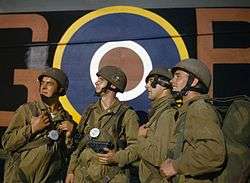Helmet Steel Airborne Troop

The Helmet Steel Airborne Troop is a paratrooper helmet of British origin worn by Paratroopers and Airborne forces. It was introduced in WW2 and was issued to commonwealth countries in the post-1945 era up to the Falklands War.
Variants
The first prototype variant was used during the Bruneval raid, these came with a rubber padding found on the rear. The helmets were short lived and replaced by the MkI.
The first steel helmet was produced at the BMB factory in 1941. These early “P Type” helmets only numbered between 500 and 1,000 units. The P Type featured a non-magnetic manganese steel shell with a rubberized rim and a lining with interior padding that was similar to the German M36/40 design. These helmets, because of the relatively small numbers that were issued, have become very rare and are seldom seen for sale.
Mk I
The next step in the evolution of the British helmet came in 1942. This helmet featured a similar shell design, but with a thick vulcanized fiber band rim that clearly distinguishes it from the German model, along with a four-point chinstrap system and a band of sorbo rubber for padding. These earliest helmets used leather chins traps and are considered quite rare. This helmet is simply known to collectors as the “airborne helmet.” The airborne helmets have been faked, and modern replicas are currently produced for re-enactors.
Mk II
Second pattern, came with the same leather chinstraps and a steel rim instead of the fibre rim (issue October 1942).
Mk III
Third pattern, came with the 3 point webbing chinstrap. This variant was used after ww2 up to the Falklands war. It must be noted that some of the chinstraps were later used on the modern day kevlar para helmet.
Users
References
| Wikimedia Commons has media related to Helmet Steel Airborne Troop. |